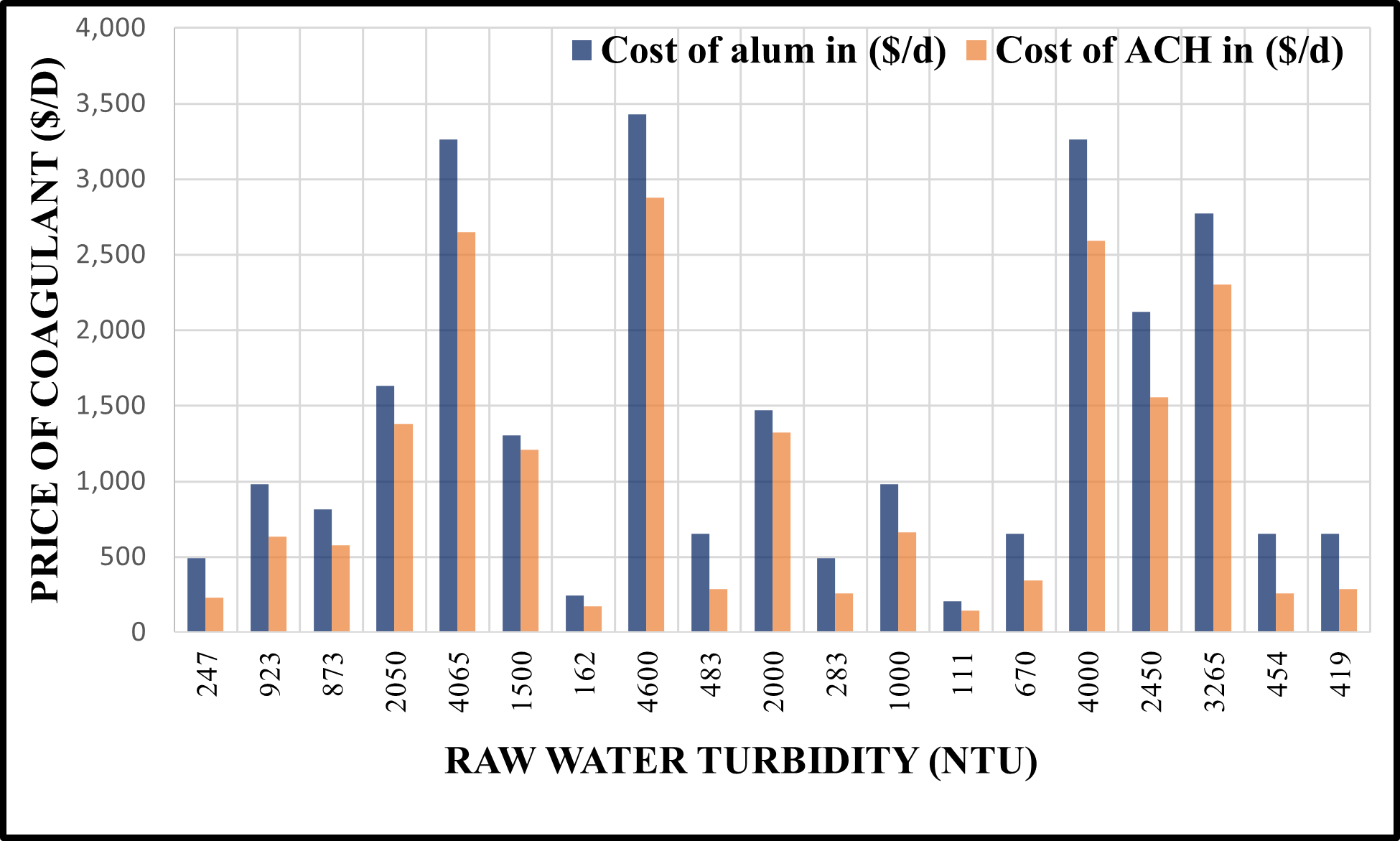
Regular water treatment-plant (WTP) comprises of a number of units. Of course, problems exist throughout design and operation of the WTP units. Consequently, the current re-search aimed to minimize the shortcomings of the coagulation, sedimentation, and the adsorption methods through applying optimal process for these units. Additionally, eco-nomic analysis and the derivation mathematical models for the new coagulant (Aluminum Chlorohydrate (ACH)) and the traditional aluminum sulphate coagulant (Alum) were an-other objective of this work. Optimum coagulants for alum and ACH were obtained and presented for different raw water turbidities. The optimum settling time of 30 minutes and 40 minutes have been found for the settling of 1000 and 2000 NTU raw water sam-ples. Best dosages of 0.1 and 0.25 g/L of powdered actived carbon (PAC) were obtained for raw water turbidity of 419, and 1000 NTU which increased the removal efficiency of 28.95%, and 25.71%, respectively. Furthermore, the economic study for alum and ACH revealed that using ACH instead of alum led to reduction of cost by 32%. Commonly, it can be concluded that using ACH instead of alum is better because it is cheaper and more efficient. The predicted equations for the optimum dosages (Y) for alum (mg/L) and ACH (µl/L) dosages (X) were Y= 0.04 X + 14.42, and Y = 0.01 X + 0.72, respectively.
Total file downloads: 6